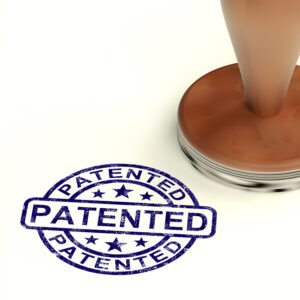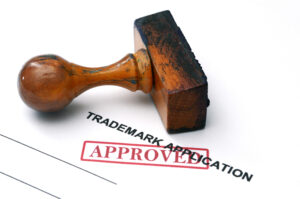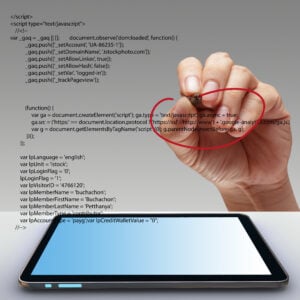
EIP Corporate Training
You need to know
You need to know
 During the past ten years or so, wherever I’ve gone in business, I hear the same complaint: there’s no good way to protect software with intellectual property. And, unfortunately, this mentality has kept some brilliant software-related inventions with fantastic potential from ever reaching intellectual property departments for consideration. So, let’s discuss the importance of software inventions and the different forms of protection available to them. We can also refer to these software inventions as computer-implemented inventions.
During the past ten years or so, wherever I’ve gone in business, I hear the same complaint: there’s no good way to protect software with intellectual property. And, unfortunately, this mentality has kept some brilliant software-related inventions with fantastic potential from ever reaching intellectual property departments for consideration. So, let’s discuss the importance of software inventions and the different forms of protection available to them. We can also refer to these software inventions as computer-implemented inventions.
Now, as you know, we’re living in the age of big data in which improvements in equipment and processes can be achieved by collecting massive amounts of data from a machine or a process, analyzing the data, and producing a useful result: for example, providing a better way of operating the machine or predicting when maintenance will be needed. Increasingly, we’re innovating to improve machines, processes, and complex systems containing them using new sets of rules called algorithms contained within software.
With this in mind, you can appreciate that companies invest billions to create and commercialize computer-implemented inventions. To me, it’s absolutely wasteful to make this investment without intellectual property protection. A friend of mine has a great way to describe this situation. He says that invention without intellectual property is charity. In my view, we should make charitable contributions to the financially-challenged and to the sick, but never to our competitors. So, when it comes to software, we need to think about intellectual property.

Let’s start with utility patents. As you may know, in the US, a utility patent is a prevention tool. With a utility patent, you can prevent others from making, using, or selling your patented technology. This can be a powerful competitive advantage.
But, before we talk about what you can patent in connection with computer implemented inventions, let’s talk first about what you can’t protect with a utility patent. You can’t patent fundamental economic principles, certain methods of organizing human activities, an idea in and of itself, mathematical relationships and formulas, pure algorithms, or activities traditionally engaged in by humans without the use of computers.

So, what can you protect with a utility patent? Well, importantly, while you can’t patent the math or the pure algorithms, you can patent what you do with the math. Now, as you may know, the part of the patent that defines your actual patent rights is the claims. And the more your patent claims relate to real, concrete things and problems like turning wheels, the better your chances of getting a utility patent. So, how you claim a computer implemented invention in your patent application can make a big difference in whether the patent office grants you a utility patent. An examiner is likely to reject your patent application if your claim is too abstract. However, generally speaking, if you include concrete features of the invention in the claims, and if you include a more operational preamble, you’ll increase your likelihood of getting a utility patent.
So, yes, patenting is an option for computer-implemented inventions. But, just because it’s possible to get a utility patent, it doesn’t mean that patenting is the right answer. Patents take years to obtain, costs are significant, and your right to exclude others is country-specific and of limited duration. And, since computer-implemented inventions naturally contain abstract features, these utility patents are much harder to get. This creates risks because in the process of applying for a patent, you’re required to fully disclose your invention. If your patent application is ultimately rejected, now, after disclosing your invention to everyone, you’re left without exclusive rights. You’ve just made a charitable contribution to your competitors. Worse yet, even if you succeed in getting a utility patent, the patent is only as strong as your ability to enforce it against infringers. Enforcement is extremely reliant upon being able to detect infringement. Simply, if you don’t know they’re infringing, you can’t sue them. Coincidentally, detectability may be strongly dependent on how well your invention is claimed. So, adding the operational elements we discussed in the previous paragraph will not only help you in getting a utility patent granted, but it will also help you detect infringement.
What is a design patent in the US? Well, first, we need to define what a design is. In the patent sense, a design must be connected to something called an article of manufacture, which is, essentially, a product. A design consists of the visual or ornamental characteristics which are embodied in or applied to a product. And since a design is manifested solely in appearance, not function, the subject matter of a design patent relates to either the configuration or shape of a product, or to the surface ornamentation applied to a product. With this in mind, it’s easy to appreciate that a design patent protects any new and original configuration, shape, or ornamental design for a product. Put another way, a design patent only protects the appearance of the product, but it does not protect the product’s functional, structural, or utilitarian features. Simply, a design patent is all about what a product looks like, and nothing about what a product does. So, if your computer-implemented invention has a unique design, such as a unique graphical user interface, you should consider seeking a design patent for your software.

What about copyright protection in the US? As you may know, a copyright is a form of protection provided to an author of an original work of authorship, including computer software code. When it comes to the computer code underlying a computer-implemented invention, copyright protection is cheaper and easier to obtain that patent protection.
And a copyright lasts much longer than a patent. But a copyright protects only the specific code being copyrighted, not the features embodied within the code, and not the results obtained by implementing the code. This is because a copyright protects the way you express your idea, as opposed to the creative or inventive idea itself.
This means that a copyright on one code base cannot be enforced against someone who writes completely new code which performs the same functions. A copyright will prevent your competitors from copying all or even part of your code, but a copyright will not protect your code’s functionality.
What about using trade secrets for computer-implemented inventions? Well, trade secret protection can be a fantastic way to maintain exclusive rights and prevent misappropriation or theft of the invention. And, like copyrights, the life of a trade secret can be substantially longer than the life of a patent. In fact, if you have a strong secret-keeping culture, a trade secret can last forever. But trade secrets can be as fragile as they are powerful. Why? Because the only way a trade secret can give you a competitive advantage and remain enforceable to prevent misappropriation is if it remains a secret. Once the secret is disclosed to the public, or once it is uncovered by the public, your trade secret rights are lost forever. Maybe you’ve heard the expression that loose lips sink ships. Well, loose lips also kill trade secret rights. But it’s not just loose lips you need to worry about; it’s also reverse engineering, independent discovery, and theft.
 What about protecting your computer-implemented invention with a trademark in the US? Well, as you may know, a trademark is anything used in commerce to designate the source or origin of a particular product. A trademark can be a word, an image, a logo, a shape, a scent, a color scheme, or a sound, as long as it identifies the company that makes the product in question. And as long as you use your trademark in commerce, your trademark rights can last forever. So yes, there can be value in protecting your software with a trademark, because doing so will tell consumers that you are the source of your product, and you’ll be able to prevent others from applying your trademark to their products. However, a trademark will not protect the design or function of your computer-based invention; a trademark will not prevent others from copying your code or imitating your software.
What about protecting your computer-implemented invention with a trademark in the US? Well, as you may know, a trademark is anything used in commerce to designate the source or origin of a particular product. A trademark can be a word, an image, a logo, a shape, a scent, a color scheme, or a sound, as long as it identifies the company that makes the product in question. And as long as you use your trademark in commerce, your trademark rights can last forever. So yes, there can be value in protecting your software with a trademark, because doing so will tell consumers that you are the source of your product, and you’ll be able to prevent others from applying your trademark to their products. However, a trademark will not protect the design or function of your computer-based invention; a trademark will not prevent others from copying your code or imitating your software.
Let’s briefly discuss defensive publications in connection with software. A defensive publication isn’t actually intellectual property. It’s more of a tactic to prevent other people from getting intellectual property, patents in particular. Essentially, by publishing an invention, you effectively destroy patent rights on that invention, worldwide. So, if you’re not so concerned with having exclusive rights to your invention, but you instead just want to be sure that no one else gets exclusive rights, you can publish your computer-implemented invention. A typical approach to defensively publishing a computer-implemented invention is to make the code available under an open-source license.
 What is open-source software? Essentially, open-source is software that’s developed by someone and made available to the public for free. Anyone can download, use, and enhance the code. The open-source software itself is just like proprietary software. The only meaningful difference between the two relates to not what it is, but what you can do with it and your access to the underlying code. But, while there are important financial benefits to using open-source software, nothing is completely free in this world. With open-source, you must carefully review the licenses that go hand-in-hand with its use. Under some open-source licensing agreements, anyone who uses the open-source code must provide free access to any enhancements they make. Which means that if you use any open-source code in your commercial products, you might be required to make your commercial product available to the world for free. Conversely, if you make your software code available as open-source, you can require anyone who uses it to make their products freely available to the world. Some people call this the infection effect, and it’s easy to understand why. What’s even worse – or, depending on whether your perspective, even better – an some open-source license can prohibit all commercial distribution of software that contains the open-source code. If you make your code freely available, you can use this fact to your advantage when drafting your licensing agreement. But, if you use open-source code that someone else has made available, beware!
What is open-source software? Essentially, open-source is software that’s developed by someone and made available to the public for free. Anyone can download, use, and enhance the code. The open-source software itself is just like proprietary software. The only meaningful difference between the two relates to not what it is, but what you can do with it and your access to the underlying code. But, while there are important financial benefits to using open-source software, nothing is completely free in this world. With open-source, you must carefully review the licenses that go hand-in-hand with its use. Under some open-source licensing agreements, anyone who uses the open-source code must provide free access to any enhancements they make. Which means that if you use any open-source code in your commercial products, you might be required to make your commercial product available to the world for free. Conversely, if you make your software code available as open-source, you can require anyone who uses it to make their products freely available to the world. Some people call this the infection effect, and it’s easy to understand why. What’s even worse – or, depending on whether your perspective, even better – an some open-source license can prohibit all commercial distribution of software that contains the open-source code. If you make your code freely available, you can use this fact to your advantage when drafting your licensing agreement. But, if you use open-source code that someone else has made available, beware!
So, let me close with this. The statement that you cannot obtain intellectual property protection on software or computer-implemented inventions is simply incorrect. Yes, it requires a bit of brainwork and creativity. But, considering the massive investment you’ve likely made in developing your invention, and also considering the powerful competitive advantage market exclusivity can give you, it’s important to meet with counsel to discuss your intellectual property options.
Thomas J. Colson, Esq.